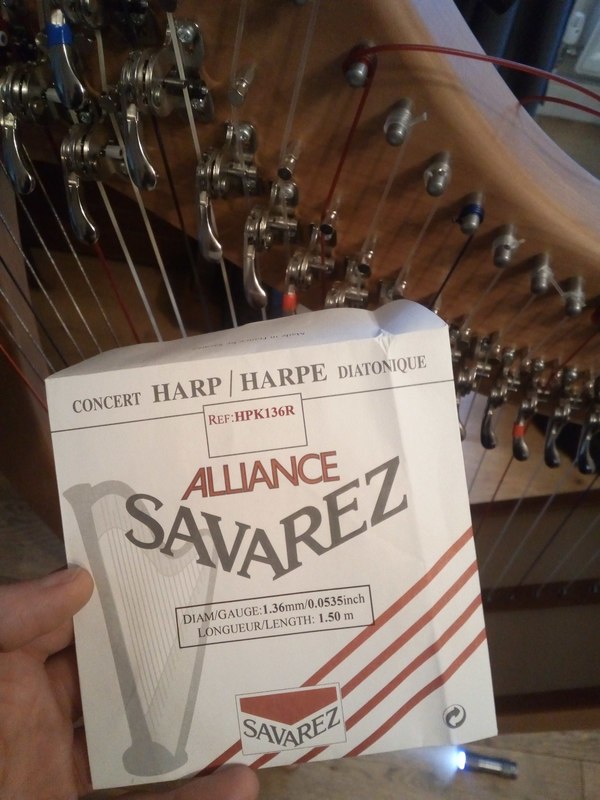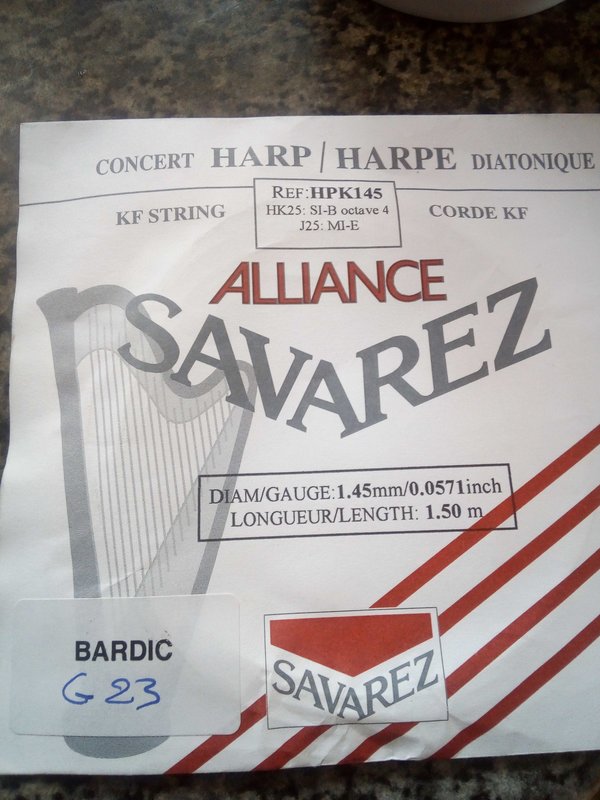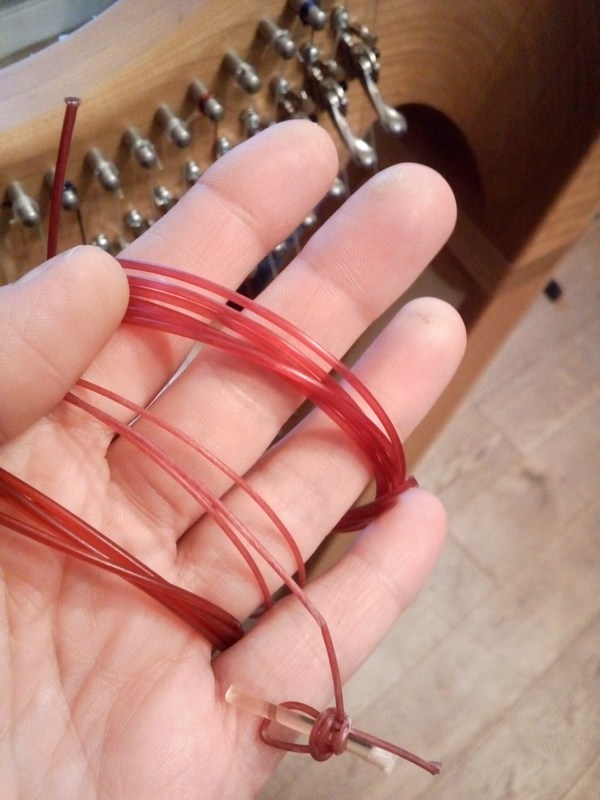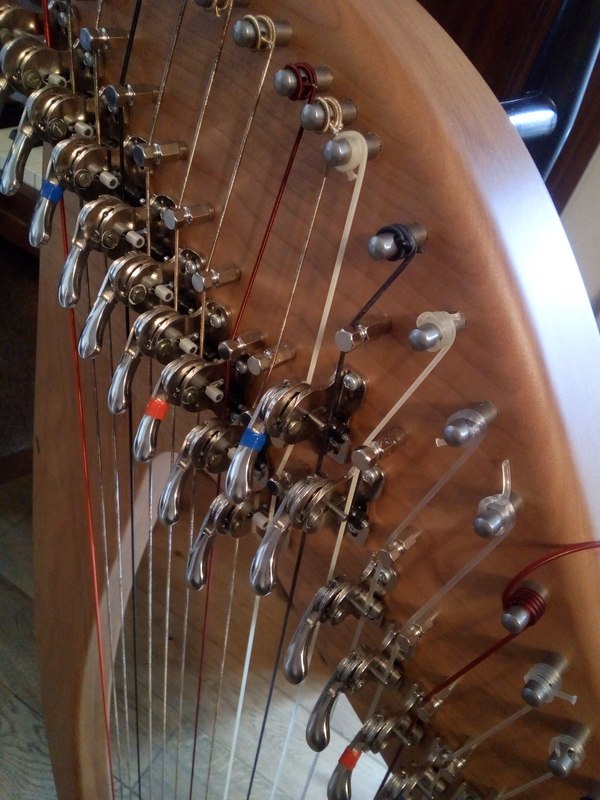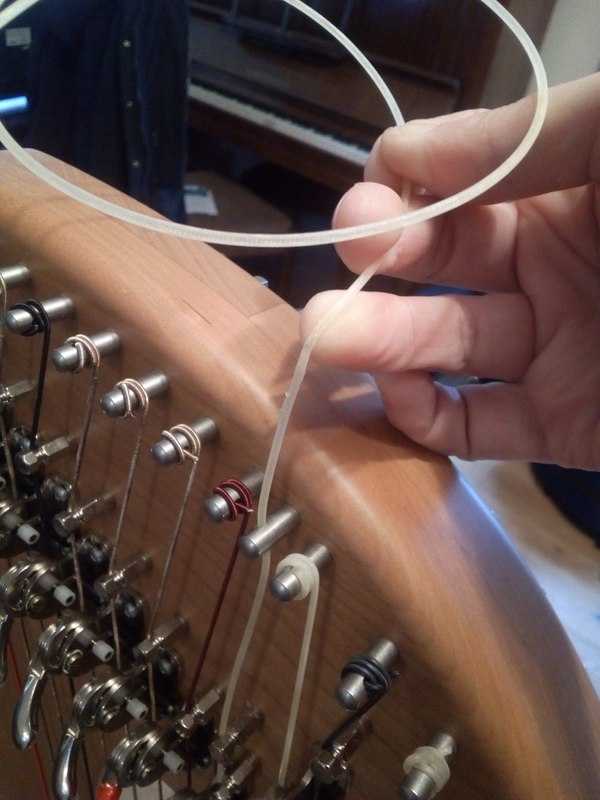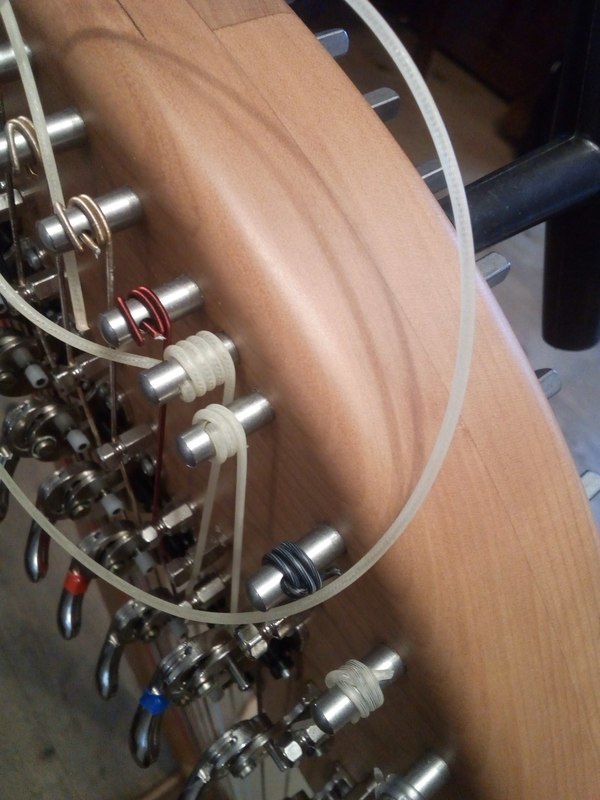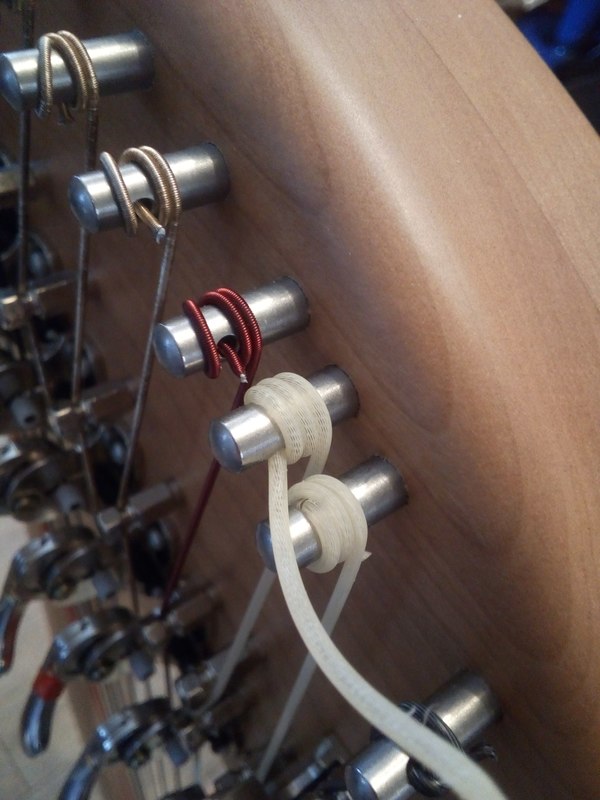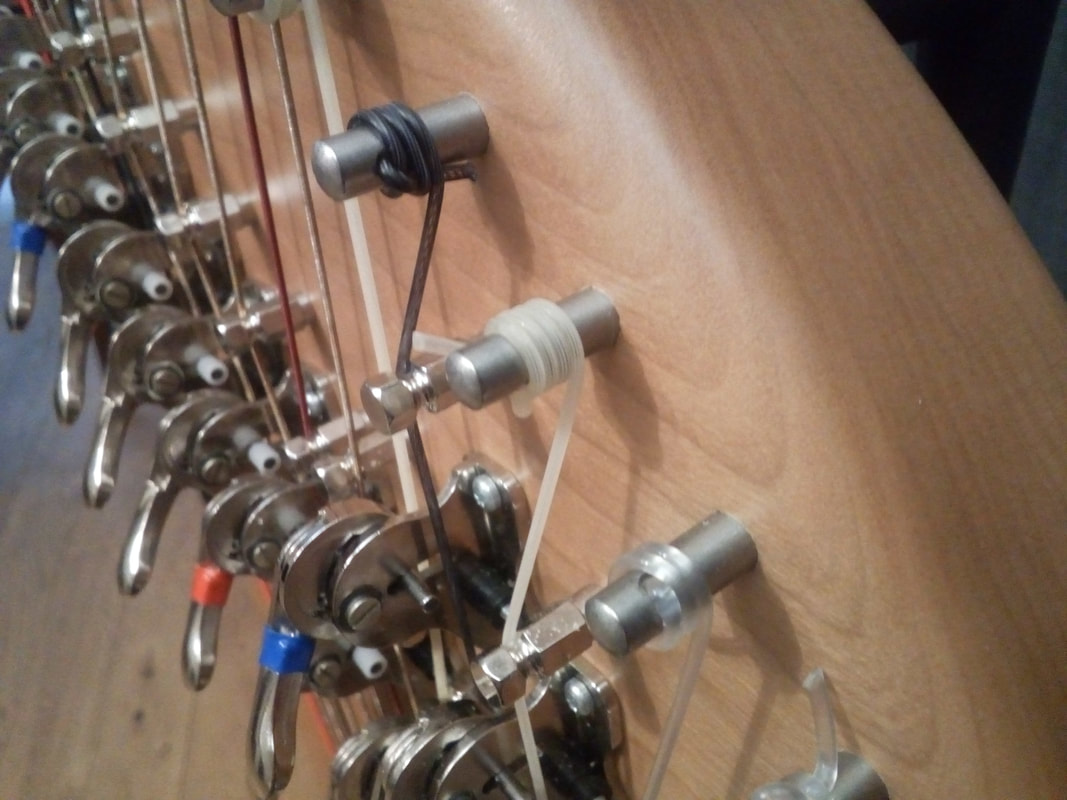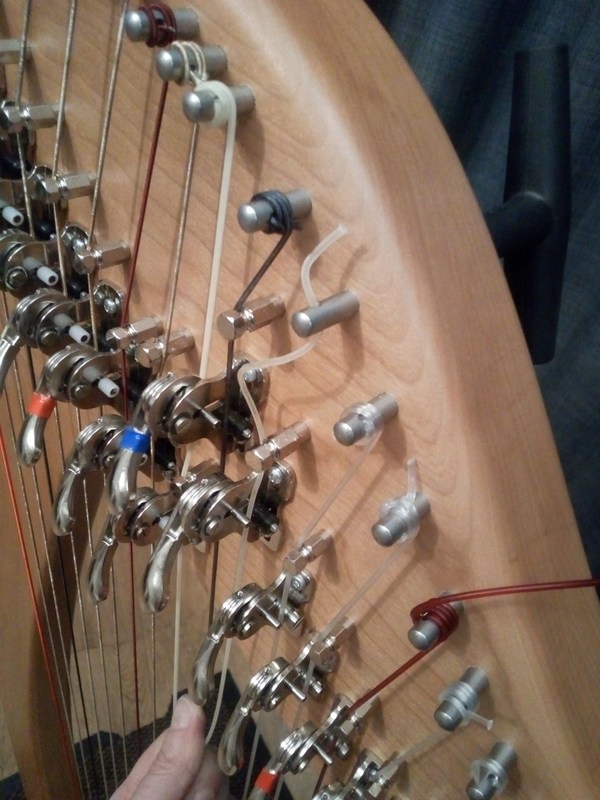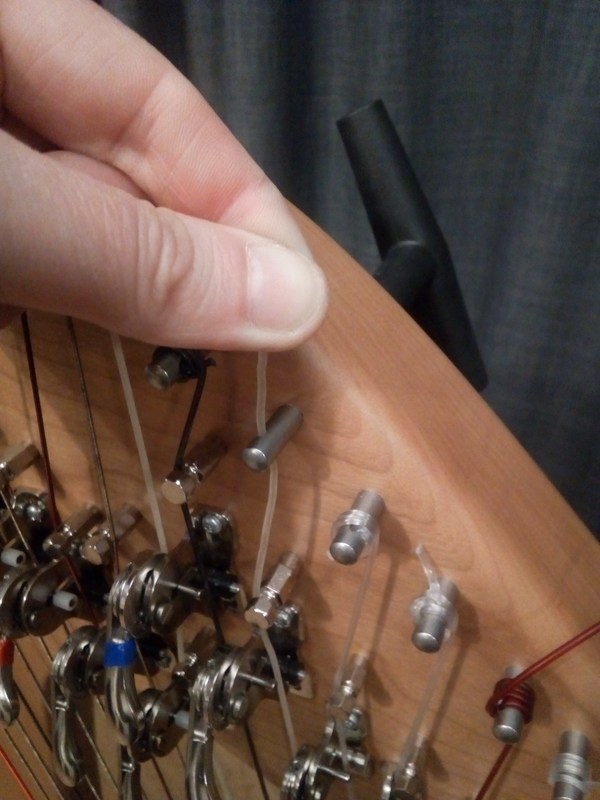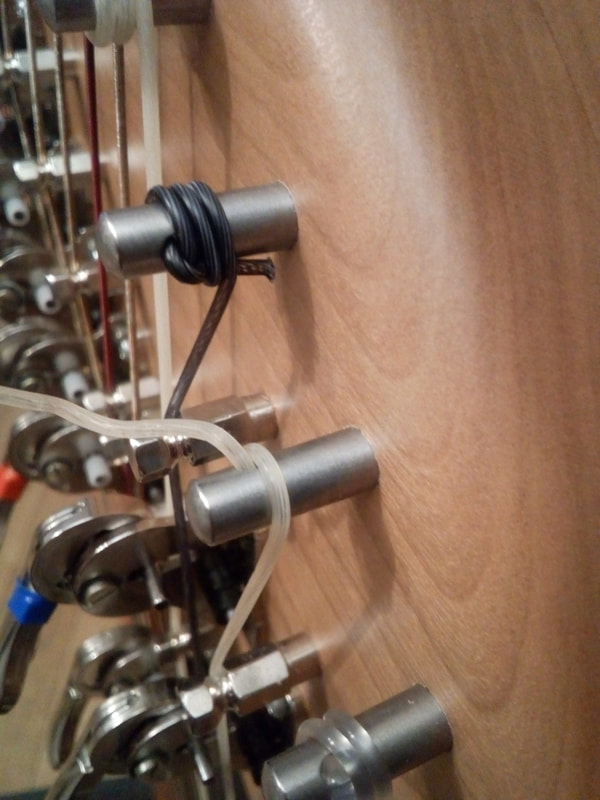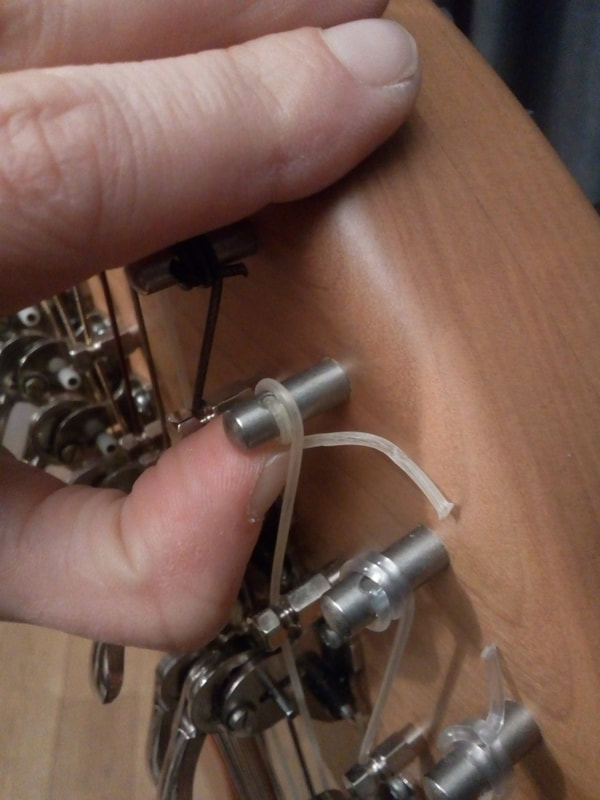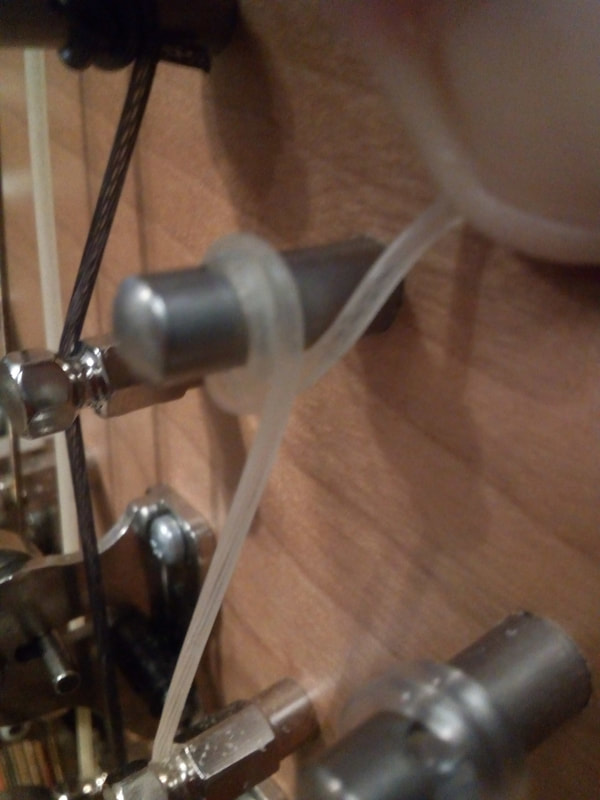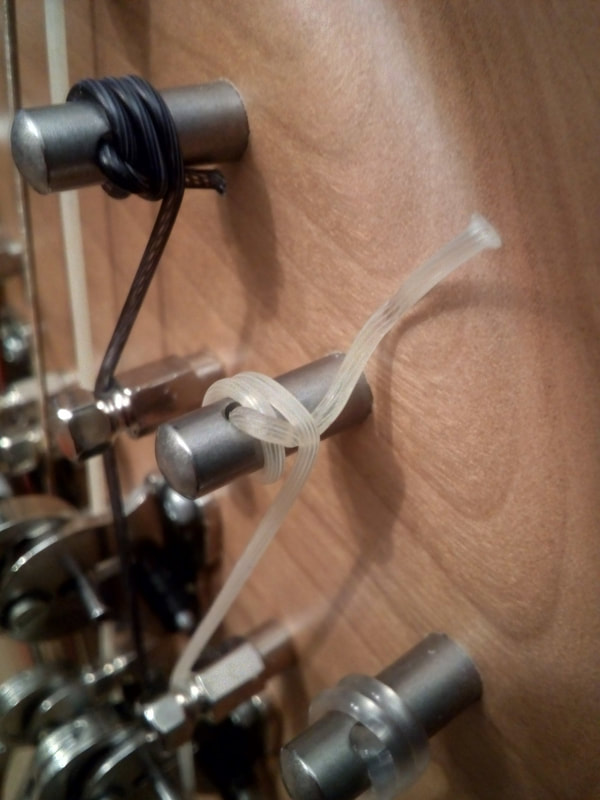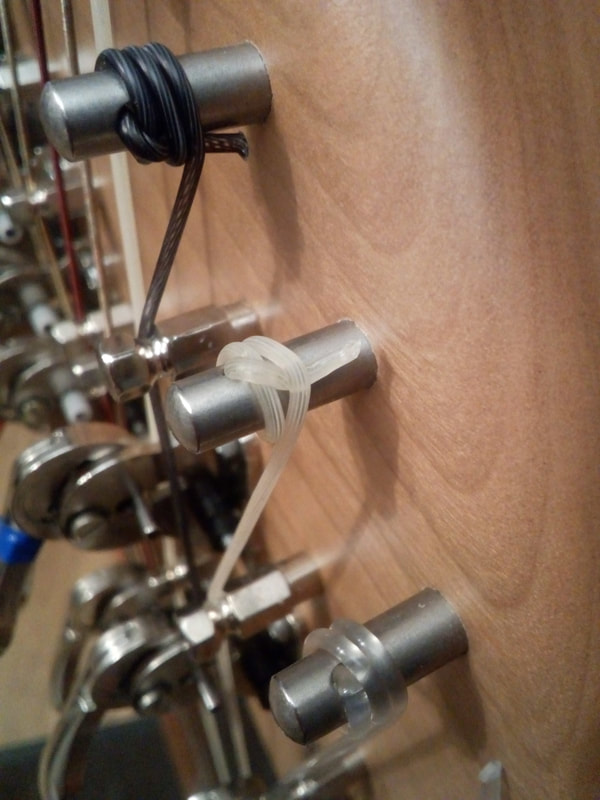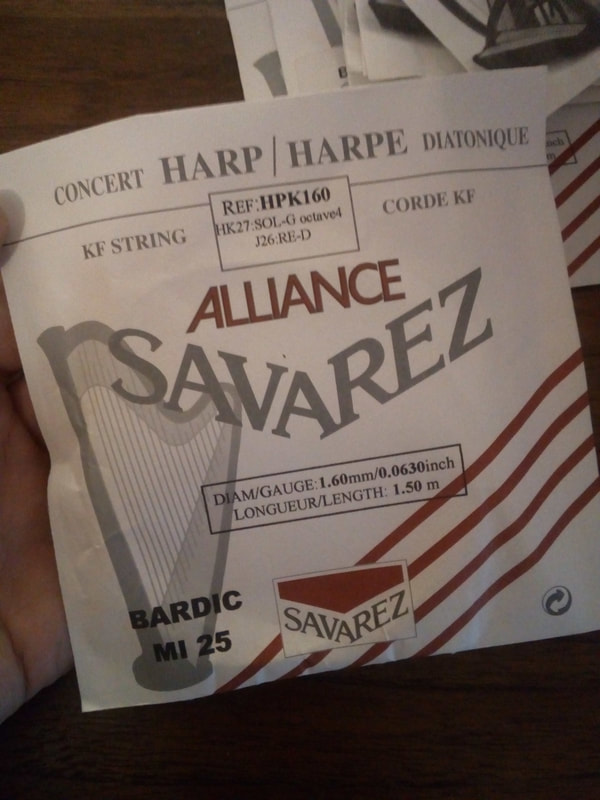|
The re-stringing I've done so far as been fairly straight forward and now it's on to the experimental side. The strings I've used on the upper part of the harp are all NYLON [shock horror] and sound amazing! I'm really pleased with how they feel and sound. They are all the nylons used on the CAMAC Bardic 27 string harp, which is my other lever harp. I have always loved the feel and sound of the Bardic, so when I decided to change the strings on this harp it suddenly occurred to me that I had a spare set of strings for the Bardic so why not put those on instead? From 4th octave D upwards the nylon strings sound brilliant, but the 4th octave C, B & A sound a bit dead and 'thumpy'. Going towards the bass end the bardic uses carbon fibre but at a different gauge to normal (here comes the interesting bit). Instead of it being lever harp gauge, it's concert harp gauge but used 3 strings higher on the lever higher. As you can see by this photo, the 4th octave G on the bardic is actually a [concert harp] 4th octave B So I tried to source the correct gauge string from a harp shop, which was impossible! So I ended up going to a German luthier string supplier that sold all types of strings for different instruments from the Alliance range. They had a harp section online but instead of the strings being listed by octave they are only listed by string gauge. Luckily they do lots of REDs and BLACKs in various gauges so you can experiment with the gauges. Taking an educated guess, I reckoned that the HPK136R was going to be the one I needed.
The important thing for me was to have no jump in sound from the nylon string on the 4th octave D above to the carbon fibre 4th octave C. Which I'm delighted to say that now it's starting to settle in there isn't!!! PHEW!!!
0 Comments
I decided that I didn't like some of the wire strings as they sounded too 'zingy' after the carbon fibre strings so I started to replace a few. I carefully removed the wires without cutting them, so I could always replace them if necessary. I decided to be a bit more methodical with the stringing this time, so I just wound the string on without catching the tail underneath the loops to lock on the pin. I kept tuning it every couple of hours for 24 hours. After 24 hours I carefully unwound it [see last post] and re-strung it so that I lost the excess (stretched) string. I checked it every day when tuning regularly, and after 5 days it looked like this. As you can see from photo above, it's a pretty much a healthy 3 coils round the peg. It still needed tuning constantly over the 5 days; but once that initial stretch is pulled through that seems to be pretty much it.
I'm just going to carefully unwind the string now allowing for it to be turned at the point it's reached now and will tie the tail under so it winds over itself. Next thing is repeating this process with the next wire down which also sounds incredibly 'zingy'. I'm hoping that I can stop there as the B below has a different heavier sound which I think will blend better soundwise. I've been doing some experimental re-stringing on my lever harp and wanted to use carbon fibre strings. My goodness, those strings are slippery & stretchy and handle completely differently from gut strings. So this morning I finally worked out a way of handling them better and here are the pictures. [Never mind the time I spent trying to fix a knot into the carbon fibre string in the first place as it kept slipping apart. I'll post pictures of how I ended up doing the knots later. For now, this post & the pictures are all about the major issue (I think) with carbon fibre strings which is just how incredibly stretchy they are!] When I wound the string onto the peg, there was so much stretch in the string, it took loads of turns to get it to pitch. Then when you left it to settle, it took more turns to get it back up to pitch. It took far longer to get to pitch than a regular gut (or nylon) string. Which meant more coils round the peg. The G string above was not too bad an example in that is was only 4 turns round, but it was still going flat and need another twist round to sharpen to pitch. So I unwound the string making sure to keep the tension by hand as much as possible with the lower part of the string to create as little movement on the knot as possible. Then I pulled the string back up to take out the slack. Then I re-engaged the string to the pin from this new point. Don't leave any slack in the string - trust me it will stretch. I had over 4 cm of extra string when I pulled it through; that is how much stretch and slack had accumulated over a period of 5 days from first putting the string on the harp. After one full revolution to then push the string towards the harp, so that now when it wound on it would lock and wind over itself. The important thing being to then trim the excess, so that eventually you would 'lose' the 'tail' under the coils as it winds on. You might think this all seems blindingly obvious, but trust me, using carbon fibre strings feels SO different to gut & nylon. I think you need to double or triple the time you would normally spend stringing, tuning and settling in the string. HOWEVER... once it's settled and in tune, I think carbon fibre are brilliant strings. ***I am using these on my lever harp but certainly would not think about using these on my pedal harps*** BUT WHY????
Good question. I'll answer that in my next blog post. #Allianz #savarez #carbon #fibre #carbonfibre #strings #KF string #corde KF |
Categories
All
AuthorLauren Scott is a harpist & composer and has been blogging on Harpyness for over 10 years. If you enjoy reading Harpyness and you'd like to buy me a virtual coffee that would be very welcome. Cheers!
Archives
June 2024
|

